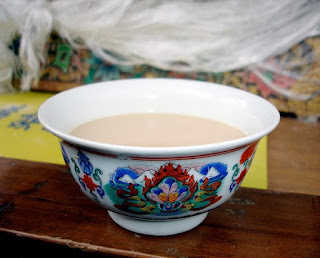When talking about vegetarianism in India, a recurrent
question often asked is how vegetarians get their daily dose of protein. The
answer lies in pulses. Indian dals
are famous and various dishes made from pulse flour are equally popular throughout
the country and abroad. The dhokla of
Gujarat, in western India, is one such food which is enjoyed for its
nutritional benefits in addition to its mouthwatering taste.
The main ingredient of dhokla
is gram flour which is rich in protein and several other vitamins and minerals.
A mixture of gram flour, rice, baking soda, lemon juice and seasonings is
fermented to attain a frothy texture. The mixture is then spooned into a
greased pan and steamed. Once the requisite steaming time is over, curry
leaves, mustard seeds, sesame seeds and green chilies are crackled in hot oil
and poured over the dish for additional flavor. The cooked batter is then cut
into pieces and served with hot green chili chutney and sweet and sour tamarind
chutney.
Dhokla has a
piquant sweet and salty taste with just a hint of heat. It has a spongy
texture, similar to cake, but softer. Since it is steamed, the calorie count is
very low. The fermentation process increases the protein and fiber count of the
dish while keeping its GI index low, making this an excellent food for
diabetics.
There are other variations of dhokla made with different kinds of flour, flavors and ingredients.
.
Dhokla is had as a
breakfast item as well as a snack in Western and Central India, though it is
quite easily available in every other city as well. Dhokla is light on the stomach and keeps checks on your calorie
intake while keeping you satiated.
While dhokla may
be a bit of an acquired taste, if you do get hooked to it, dhoklas will soon be your go-to snack on every occasion.




















